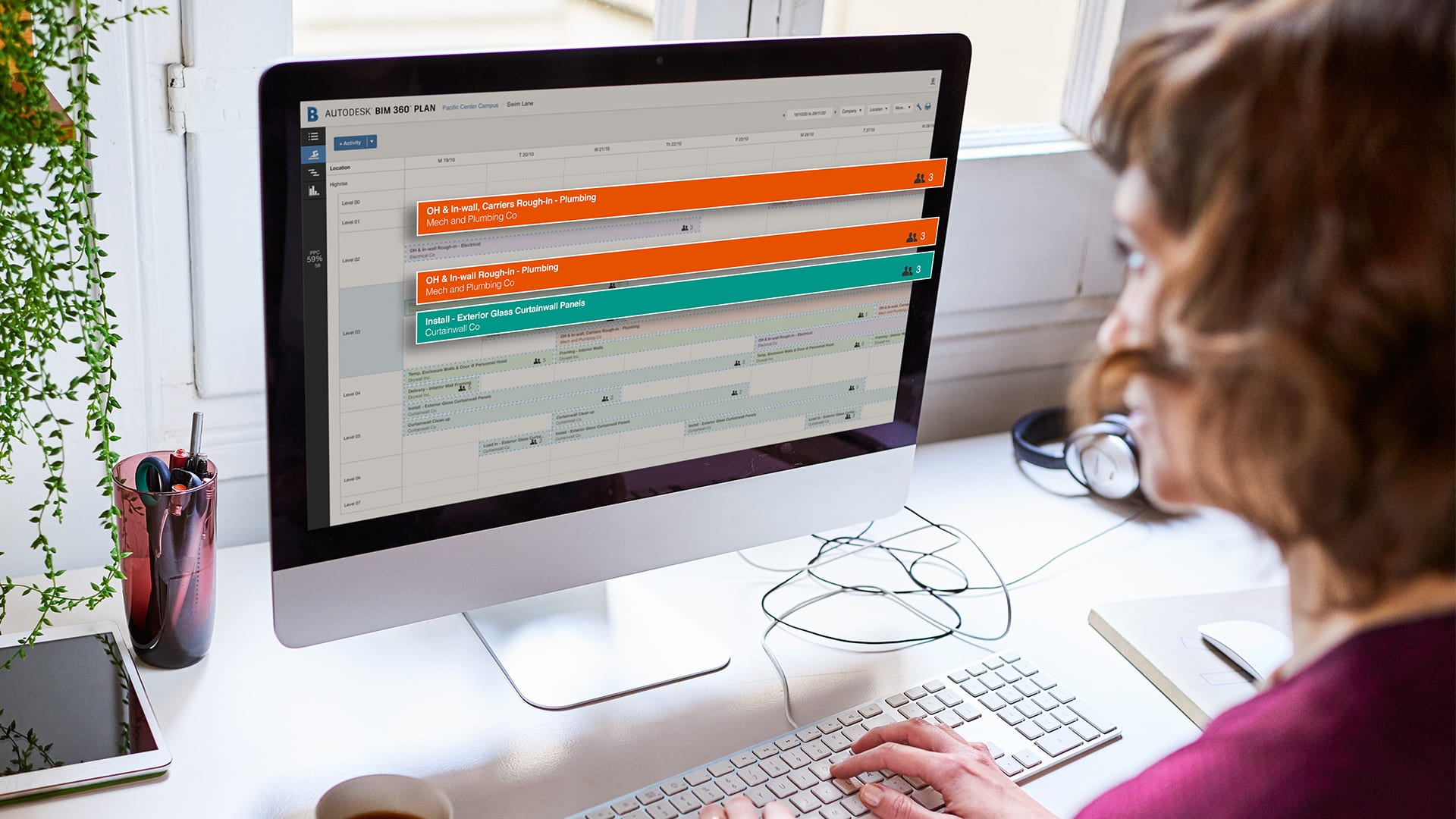Help us improve your experience. See content that is made for you!
See how IBM increased their efficiency by up to 30%!

Help us improve your experience. See content that is made for you!
See how IBM increased their efficiency by up to 30%!


There’s no question that the last year has dramatically impacted how the industry operates. Virtually every aspect of construction projects — whether it’s safety planning, supply chain management, or design changes — had to be altered to work in the new normal.
2021 continues to be a year of change. Digital tools will continue to play a critical role on projects to improve how we plan, manage, and collaborate on projects.
Forward-thinking firms are embracing new ways to enhance remote planning and task management in order to improve productivity. To help them on this journey, companies are turning to digital tools like BIM 360 Plan to keep their teams and projects on track.
Read on to learn how teams are improving virtual planning and task management with digital construction technology.
No construction manager wants to see crews standing idle due to missing information or incomplete work. To reduce waste and keep projects moving forward, many construction teams turn to Lean Construction practices. Lean projects adopt a more collaborative approach to short term planning and task management to reduce time waste.
Traditional planning methods like CPM usually revolve around one person deciding on the project schedule. Dates are assigned to project activities, then milestones are calculated from there.
On lean projects, teams utilize short term planning sessions where they start with a target completion date or milestone then work backward to define and schedule tasks. Unlike CPM, which is done by one person, lean planning is collaborative and conducted by those performing the work. Having the people who execute on a project commit to the work, changes the plan from an impersonal document to a personal commitment by those they work with every day.
For instance, one pull planning reduces wasted time because tasks, materials, and deliveries are “pulled” from downstream customers. As the Lean Construction Institute notes, "Pull scheduling will often expose the need for smaller batches, just in time delivery, improved leveling of resources, and reduced lead times. Workflow becomes more reliable and efficient as the waste of waiting, redundancy, and overprocessing are eliminated."
Because it’s so collaborative, pull planning is traditionally done in person, with sometimes 20 people getting together to iron out the details of a project. Unfortunately, the need for social distancing has made pull planning more challenging.
Another issue? With today’s jobsites experiencing limitations in the number of people allowed in working space at a given time, there tends to be a lot of waiting around — which increases costs.
For these reasons, companies like Batson Cook adopted digital tools to facilitate the pull planning process.
“We’re pretty ingrained in Lean Construction and we've been doing it for eight to ten years now. On some of our projects, we’re limited to just 10 people in a room and we can’t get close to each area where we can collaborate. It’s that lack of effective collaboration that drove us to go digital,” explains Jason Waddell, Director of Construction Technology Development at Batson-Cook Construction.
BIM 360 Plan is one tool that enables teams to remotely build reliable work plans using Lean Construction principles.
The software allows teams to create work sequences and build reliable plans based on Lean Construction principles. With BIM 360 Plan, teams can collaborate and commit to plans, thus encouraging engagement from all stakeholders and obtaining firm commitment to complete tasks.
By digitizing the pull planning process, stakeholders are able to collaborate virtually and update their work data plans more quickly, ultimately saving everyone time.
“We've increasingly been using BIM 360 Plan during the design phase. For a big job, we could have 20-30 people easily in the room participating in the pipeline,” says Michael Zeppieri, Director of Emerging Technology, at Skanska.
“I think a lot of people felt that in order for a pull plan to be effective, people had to physically be in the same room. But with digital construction tools, we’ve proven that we can do it virtually,” he adds.
Tracking construction materials and managing supply chain logistics have been more challenging because of COVID-19 — and these issues are likely to persist well into 2021.
TradeTapp insurance partner AXA XL conducted a COVID-19 survey about supply chain impacts and found that over 75% of their insureds "are more concerned or much more concerned about supply chain and material delivery impacts and their effects on their subcontractors’ ability to perform on their projects."
Then there’s the matter of labor logistics. With jobsites having limited capacity, companies can’t have too many workers in the same location at any given time.
“If we're all trying to work on a certain task, there may be 10 people at the same location, at the same time,” says Jason. “Being able to sort a schedule by location and trades at any given time would help us ensure we have enough space for workers on site. It also helps us run our projects efficiently.”
Tools like BIM 360 Plan can help construction teams use Lean principles to stay on top of supply chain and jobsite logistics. The software offers tools for creating more reliable work plans for tasks, so the jobsite always has a good flow of labor, materials, and processes.
BIM 360 Plan does this by offering multiple views and representations of planning information. For instance, teams can use the Swim Lane view to filter schedules by company, location, and work. This way, teams can easily see how many workers are on site at a given time and from which company.
Downtime costs owners money on a project, and many are concerned about knowing if there are project delays and for how long. Unfortunately, today’s new normal doesn’t exactly make it easy to meet with key stakeholders for immediate debriefs and project statuses.
But pandemic or no pandemic, communication with owners and executives continues to be a critical part of any project. Effective communication keeps everyone informed, eases owner concerns, and builds trust.
And thanks to tools like BIM 360 Plan, teams don’t have to wait until they’re all in the same room to keep everyone updated. The software makes the pull plan highly accessible and can be shown to owners so they can keep tabs on the project’s progress.
BIM 360 Plan also tracks Planned Percent Complete (PPC) – a metric that defines how well the planning system is working. PPC is calculated by dividing the total number of “committed” tasks completed on the day stated by the total number of assignments made for the day.
BIM 360 Plan not only calculates PPC automatically, it also makes the data available in the cloud, so owners can see it whenever they need to.
This makes the process more transparent and ultimately leads to higher levels of trust and better conversations.
As Michael puts it, “When owners are part of the pull plan and they understand all the moving pieces, it's easier for them to understand why the shifts are happening in the trade-offs and it just makes for a more productive dialogue with the owner.”
Remote planning and task management are going to be more important to construction’s future — even once the pandemic has passed. As such, you must ensure that you have the tools and platforms in place to effectively map out your projects and track progress.
At Autodesk, we’re continuously developing ways to help you do just. Stay tuned for future product updates by subscribing to the blog!

May we collect and use your data?
Learn more about the Third Party Services we use and our Privacy Statement.May we collect and use your data to tailor your experience?
Explore the benefits of a customized experience by managing your privacy settings for this site or visit our Privacy Statement to learn more about your options.